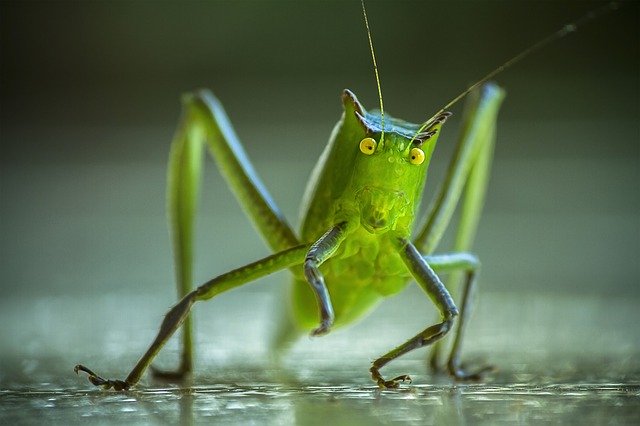In the wild, red-eyed tree frogs often eat crickets as part of a varied diet, including many other types of insects. Aside from the cricket, these different types of food are grasshoppers, moths, grubs, worms, and even other frogs!
It is inhumane to feed captive red-eyed tree frogs and other frogs, so it is considered good practice to feed your pet frog crickets and other insects.
In this article, we will cover why it is okay to feed your Red-Eyed Tree frog crickets, other foods you can give them if you so wish and how to prepare your crickets to ensure the Red-Eyed Tree Frog can be happy, healthy, and well-fed!
Diets in the Wild!
Where do these little friends normally live? What kind of food is available to them? These questions will be answered in this next section.
Tree frogs usually live way up high in the canopies of substantial rainforest trees, so it is no surprise that they have to keep a very varied diet! They are native to the rainforests of Latin America, stretching from Mexico to Columbia.
Red-eyed tree frogs are not large enough to prey on birds or other creatures, so their quarry in the canopies of these trees is relegated to insects and grubs.
However, there are things that you need to remember when feeding your red-eyed tree frog crickets.
The crickets we can buy from pet stores are not fed on or absorb the same kinds of nutrients or vitamins that they would find in the wild. Unfortunately, that means sometimes you will need to add supplements to the diet of your red-eyed tree frog, which will be covered later on in this article.
Sustainable food source.
Crickets are a fantastic food source for red-eyed tree frogs because they mimic the high-protein insects that the amphibian species would be used to in the wild while also being incredibly readily accessible to those of us who do not live. In the canopies of Latin American rainforests!
Frogs are both carnivores and insectivores – meaning they eat only meat but mainly rely on insects as sustenance.
Crickets are small, tasty to frogs, and easily digestible, making them a fantastic food source for this household pet. In fact, due to their size, nutritional value, and high protein content, crickets are generally considered an excellent dietary staple for a vast range of exotic amphibious, arachnid, and reptile pets.
Crickets are commonly used as a food source for the following pets:
- Bull tarantulas
- Bearded dragons
- Newts
- Common Frogs
- Mediterranean House Geckos
As we can see, crickets seem universally acknowledged as an excellent food source for various household exotic pets.
However, there are some pitfalls with crickets. Crickets have a callous outer shell known as chitin in insectoids. If you do not control the diet of your red-eyed tree frog properly when its primary source of food is crickets, chitinous food sources like cricket can be damaging to the animal.
The chitin can impact the frog’s stomach on digestion if too much cricket is eaten in a short period, making them seriously unwell. Not only can chitin potentially cause stomach and digestion issues, but it is also known to impede the autoimmune response of certain animals and humans.
On the other hand, it is worth remembering that this potentially dangerous problem is infrequent. This will only happen if you allow your tree frog to eat excessive chitinous food in a short time. As always, consult a veterinary professional if you are unsure of the dietary requirements of your specific pet.
In general, it is accepted that you should feed baby red-eyed tree frogs as frequently as they request food, and as they grow older, you should change this to approximately 2-3 crickets every three days. Therefore, they should be fed these approximately twice, if not three times a week.
In the next section, we will briefly cover what other things you can feed your red-eyed tree frog to avoid any issues with overexposure to chitin in the tree frog’s diet.
We are changing the diet.
While we have established that you can feed crickets to red-eyed tree frogs, it is also important to remember to vary this diet every so often. Of course, a portion of staple food like crickets is significant, but you should also ensure your tree frog gets a nice culinary treat now and then.
These treats take the form of many different insectoids – some grubs and mealworms are excellent, non-chitinous substitutes to use every so often. Waxworms are a tasty treat for tree frogs, but their overuse in a diet can quickly make your frog very obese.
To Conclude.
In general, you should avoid wild insects, as you do not know what diet or chemicals they have been exposed to.
It is also sometimes recommended to treat the crickets with a type of calcium powder to help improve your pet’s calcium intake.




